Seasons – August 2020

From the Plateau Land & Wildlife Management Team
As our summer season comes to a close and we look forward to cooler weather this fall, now is the time to be considering predators and predator control on your property. From Invasive Red Fire Ants (IRFA) to feral hogs, invasive predators can cause damage to our native flora and threaten native wildlife. There are many considerations landowners must take into account when controlling predator populations, including liability issues that can arise as you have guests visiting your property this summer and early fall.
In this issue of Seasons, we will highlight tools for feral hog management, threats to native red harvester ants and the horny toad, wildlife management activity suggestions for predator control, liability considerations for landowners, a featured Plateau Land Group property listing, and more.
As always, we hope you enjoy all that this season and Seasons has to offer! Stay safe, and stay cool out there friends!
Until next Seasons,
The Plateau Team
Table of Contents
Feral Hog Control: The New and Old Technologies for Population Management
Wildlife Management Activity Reminder: Predator Control
Red Harvester Ants and The Horny Toad
Landowners Should Claim Their Rights Under Texas Laws that Limit Liability
Plateau Land Group Featured Listing
News for Texas Landowners
Feral Hog Control: The New and Old Technologies for Population Management
By David Riley, AWB, Staff Biologist II, Registered Property Tax Consultant
 As seen in the Texas Wildlife Association’s April 2020 Texas Wildlife Magazine.
As seen in the Texas Wildlife Association’s April 2020 Texas Wildlife Magazine.
Feral hog management could potentially be one of the most difficult and frustrating aspects of land management. With feral hog populations reaching 3 million and no sign of slowing down, many landowners have realized that one single method of management may not get the job done.
Where did the feral hog problem begin?
In the 1500s, early Spanish explorers brought pigs to Texas, which inevitably escaped and began breeding in the wild. In the 1800s, many settlers brought domesticated swine to be utilized as a food source as they settled throughout the southern United States. However, many of these domesticated pigs were released into the wild by farmers as the meatpacking industry rose in the 20th century rendering small pork producers unnecessary.
The popularity of sport hunting in the 1900s ushered in the prime cause of today’s feral hog problem. Wild boars from Europe and Asia were released throughout the southern United States for hunting, but many of these boars avoided harvest and began breeding with the feral population of once-domesticated pigs. During the mid-1900s to the early 2000s, it was common practice for landowners and hunters to capture and release feral hogs in new areas to increase hunting opportunities.
Ultimately land managers began to see the problem that had been created as feral hogs caused land and crop damage which inevitably cost landowners money. The 80th Texas Legislature in 2007 played a major role in the beginning stages of feral hog management when legislators gave the Texas Animal Health Commission (TAHC) complete authority over the movement of feral swine. This change in the law allowed the TAHC to stop all release of feral hogs into the wild, but the damage from decades of unnatural feral hog movement could already be seen.
What are the major concerns?
Feral hogs are very good at adapting to their environment and recent studies show that approximately 79 percent of Texas provides suitable habitat for feral hogs. Feral hogs are known to average between 1.5-2 litters annually, with each litter consisting of 5-13 piglets.
Typically, feral hogs stay together in a large group, also known as a sounder. Recent data from Texas A&M (TAMU) AgriLife Extension Service shows that there is an average of 8.9-16.4 feral hogs per square mile and this number continues to grow as feral hogs hold a 21 percent annual population growth potential.
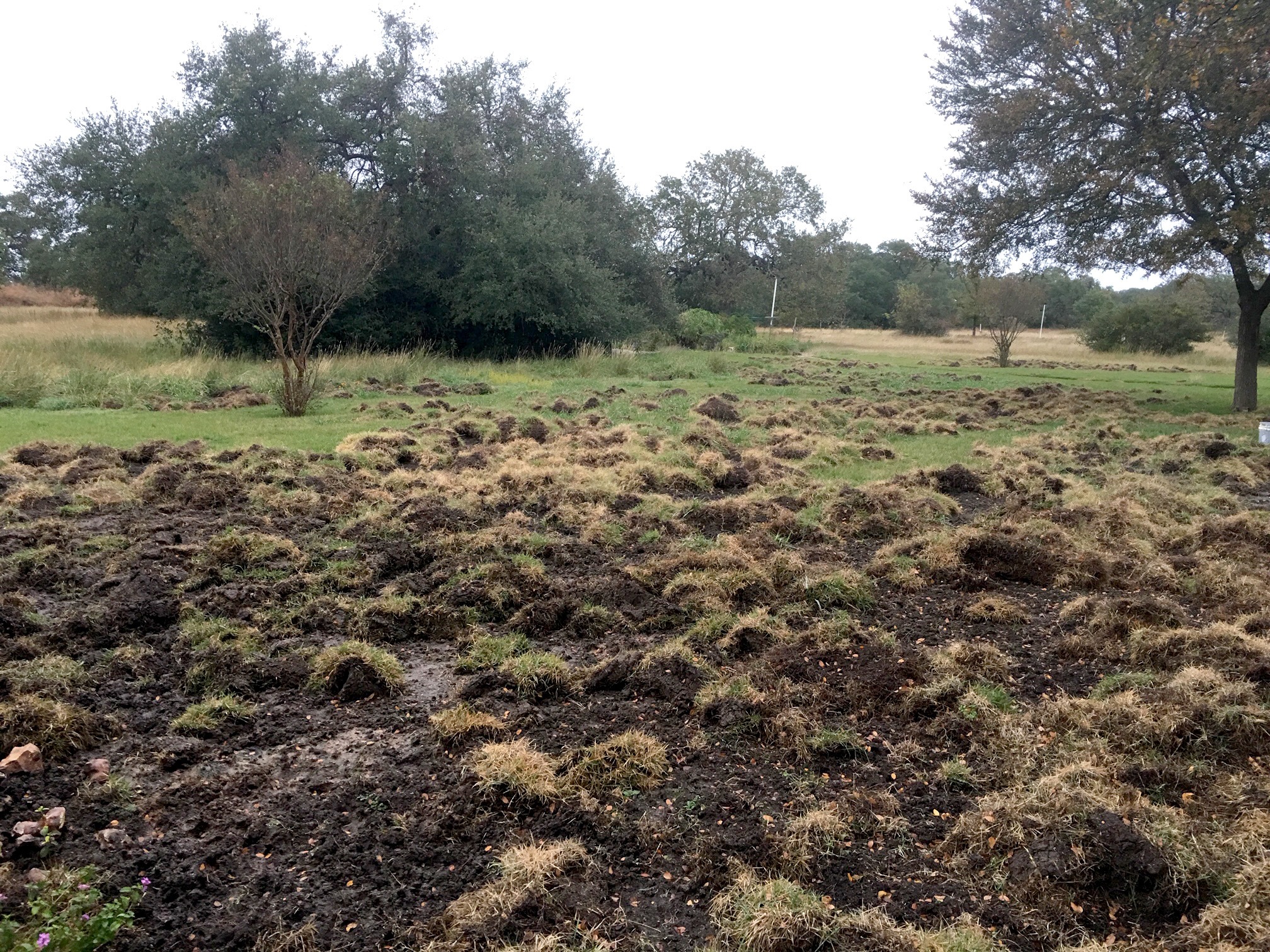
Feral hogs can cause thousands of dollars in damage to residential yards in just one night. Photo courtesy of Ben Woodland
Feral hogs cause approximately $52 million in damage annually to agricultural production in Texas, which can be seen from destroyed crop fields and damaged agricultural equipment. Many agricultural producers, such as crop farmers who can no longer afford to replant crop fields after feral hog damage, have given up on trying to manage hog populations and changed their livelihood.
This figure does not include the ecological impacts such as damage to watersheds and impacts on native wildlife populations, which could drastically increase the cost of damage feral hogs cause. Furthermore, feral hogs are no longer a problem exclusive to rural landowners. They are now found in more urban and suburban environments. Many homeowners spend thousands of dollars annually repairing lawns that have been completely ruined by feral hogs.
The feasibility of harvesting enough feral hogs to maintain and/or reduce the current population is often misunderstood. A 2010 survey from TAMU AgriLife Extension Service showed that the average harvest was approximately 29 percent of the population, which falls drastically short of the 60-70 percent harvest needed to maintain the population at its current levels. With the steadily growing population and the increased cost in damages annually, landowners and biologists alike are employing new and old methods of removing feral hogs.
Rules of feral hog management
The first rule of feral hog management is that there is no “silver bullet” when it comes to control methods. There are advantages and disadvantages to each type, but the likelihood of one method being the cure-all for your feral hog problem is almost non-existent. Most biologists agree that a multi-pronged management approach typically produces the best results over time. Be sure to assess your techniques regularly and alter management based on these results.
Understanding the feasibility, both economically and environmentally, of your management decisions is the second rule of feral hog management. Many land managers may not have access to the newest trap designs due to cost, so designing a management plan that is affordable and allows you to implement different control methods is essential.
It is also very important to think about the amount of time you’re willing to spend on managing the feral hog population. Methods such as snaring can take considerable time since they need to be checked regularly.
Along with the economic feasibility, it is important to review the logistical feasibility of your control methods. For example, aerial gunning works well in South Texas where the brush is low and visibility from the helicopter to the ground is rarely impeded, but this activity becomes nearly impossible in the dense Ashe juniper/oak woodlands of the Texas Hill Country. Accounting for the feasibility aspects of your feral hog management plan is essential to having success at controlling the population.
The proverb “patience is a virtue” accurately describes the third rule of feral hog management. Feral hog management can be a frustrating task that may take many months, if not years, to see results. Hogs are intelligent animals that are often wary of changing settings, such as a new trap set up in the field or an opening in a fence that was previously not there.
It’s important to remember that every method of management takes time; whether it be the time it takes to pre-bait a trap site to gain confidence of the sounder, or the time spent in a hunting blind waiting for the hogs to arrive at the feeder.
What are my options?
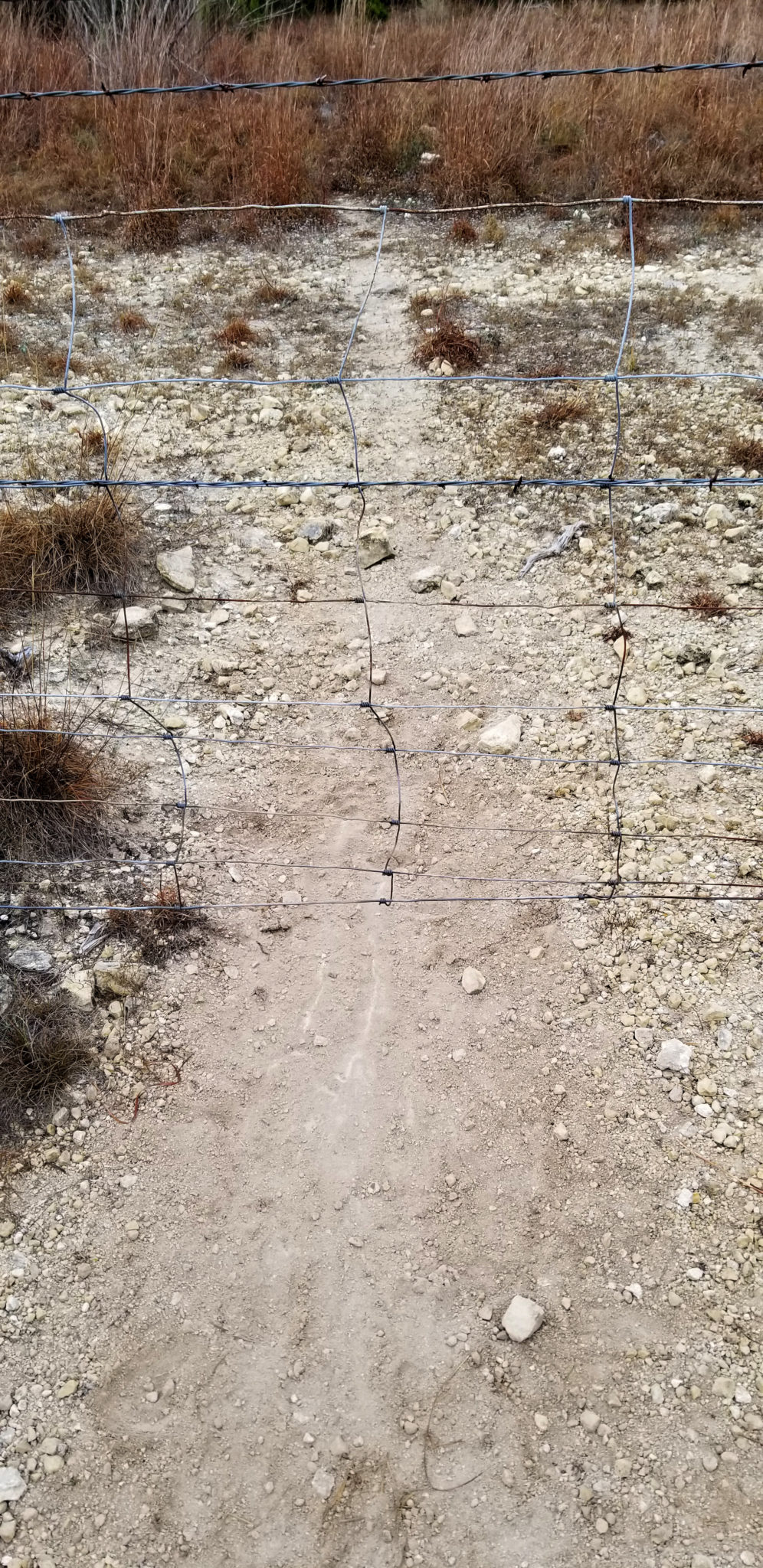
Locating travel corridors along fences can be useful spots to place snares. Photo courtesy of Beryl Armstrong
One simple and cost-effective management method would be the snare. Snares can be used nearly everywhere and are easy to set up and monitor. Many feral hogs that have escaped trapping will not enter, or will avoid traps, commonly known as being “trap shy”. Snares are a great tool to use against the feral hogs that may have outsmarted other methods.
The disadvantages of snaring are fairly obvious in that it only catches one hog at a time and can be time-consuming to set up and check. It is also important to make sure that snares are set up in places least likely to capture non-target animals and installed with devices to avoid the snare from closing completely on the leg of a non-target animal if caught.
One of the most commonly known methods of feral hog management is trapping. There are many different types of trap designs and just as many different gate and tripwire configurations that can be used.
There are two basic categories of traps, the box trap and the corral trap. The box trap is typically a smaller trap that is completely enclosed with hog panel and can be put on a trailer and dropped in the location you desire. The box trap design can be useful for trapping a solitary hog that may have escaped different trapping methods. The disadvantages of this trap design are that it can be bulky and difficult to move. Trap door designs on box traps are also very limited, and it may be challenging to lure a hog inside the trap.
The corral trap is typically a larger trap built from hog panel and can be created as big or small as you need to fit the whole sounder. These traps can have several different door designs, from mechanical gates that drop from a tripwire or cell phone command to a non-mechanical gate that allows hogs to continually enter the trap without the ability to escape.
It is important to note that these traps should be reinforced with t-posts set every 3-4 feet apart to ensure that the feral hogs cannot push over the panel and escape. For areas where it may be hard to drive a t-post, you can use pre-fabricated panels that can also help in the ease of relocation, but this can be a fairly expensive option.

After trapping feral hogs, they can be transported to an approved holding facility or, if a male, to an approved hunting preserve. Photo courtesy of John Kinsey
Lastly, it is important to make sure the trap design is rounded and has no sharp corners. Feral hogs are notorious for piling up in the corner and climbing over the top of the wire panel.
As trapping has become more popular, new technologies have been introduced such as the drop trap. This trap design is similar to the corral trap, but the entirety of the drop trap is suspended in the air and is released upon a computerized trigger to drop and trap feral hogs inside. This trap design has been very successful in recent years, partially because it is a new design that feral hogs have not yet outsmarted.
For those managers who plan to utilize a trapping method, it is essential to pre-bait the trap. Pre-baiting is when bait is set in and around the trap, but the trap door itself is not set or is wired open. Many trappers choose to start pre-baiting before the trap is even constructed and they will slowly construct the trap in place. This allows the feral hogs to become comfortable and increase your chances of trapping the entire sounder instead of one hog.
Hunting or strategic shooting methods around bait stations can also be utilized as a management tool for feral hogs. Typically, several bait stations are strategically placed throughout the property and utilized randomly to reduce the chances of the feral hogs becoming shy of the feeders.
Aerial gunning is another type of shooting method in which feral hogs are targeted and dispatched from a helicopter. This method has proven to be very successful in recent years but can be quite expensive. Aerial gunning is most effective where there are large populations of feral hogs and the vegetation doesn’t impede your ability to see and shoot.
What about toxicants?
Currently, there are no toxicants approved for use in Texas, but there have been steps made to get one on the market. In 2017, a Warfarin based product known as Kaput®, was briefly approved for use in Texas. After pushback from landowners and the scientific community about the safety of the product toward humans and other wildlife, the product registration was pulled from Texas.
Since the mid-2000s scientists have been researching and testing sodium nitrite as a potential toxicant for feral hogs. Sodium nitrite is a chemical that is commonly used in the meatpacking industry as a food preservative and in small quantities can be lethal to feral hogs.
Sodium nitrite is also a more humane method, since the toxicant works rapidly and death is typically seen within 1-2 hours, which is considerably faster when compared to Warfarin-based products that could take up to two weeks.
The sodium nitrite-based product, also known as Hog-Gone®, is currently undergoing its second round of field trials. These field trials allow researchers to accurately monitor the bait delivery system’s effectiveness to reduce non-target ingestion, as well as assess feral hog response to sodium nitrite.
We are still a long way from having an approved toxicant to manage feral hogs in Texas, but the overall goal of the field trials and ongoing research is to improve safety for humans and other non-target wildlife species.
How should you respond?
Landowners who currently have little to no sign of feral hogs should prepare and be proactive at the first sight of feral hog activity on their land. Getting ahead of the feral hog problem before they can establish a large population in an area can be the difference in successfully controlling the local population and mitigating the damage they cause.
Simple, time-tested methods of snaring, trapping, strategic hunting and running dogs have been utilized for several decades and have proven to be effective at reducing feral hog populations. These methods, along with newer technologies, such as drop traps, remote camera surveillance and remote gates can all be excellent tools to manage your hog population.
It is important to remember that there is no “silver bullet” when it comes to management. You must understand the feasibility of your control methods before implementing and have patience for many of these control methods to work. Implementing several different types of control efforts across your property while also working with neighboring properties, is the best way that we can manage this invasive species that has slowly taken over the Texas landscape.
Back to TopBack to Top
Wildlife Management Activity Reminder: Predator Control
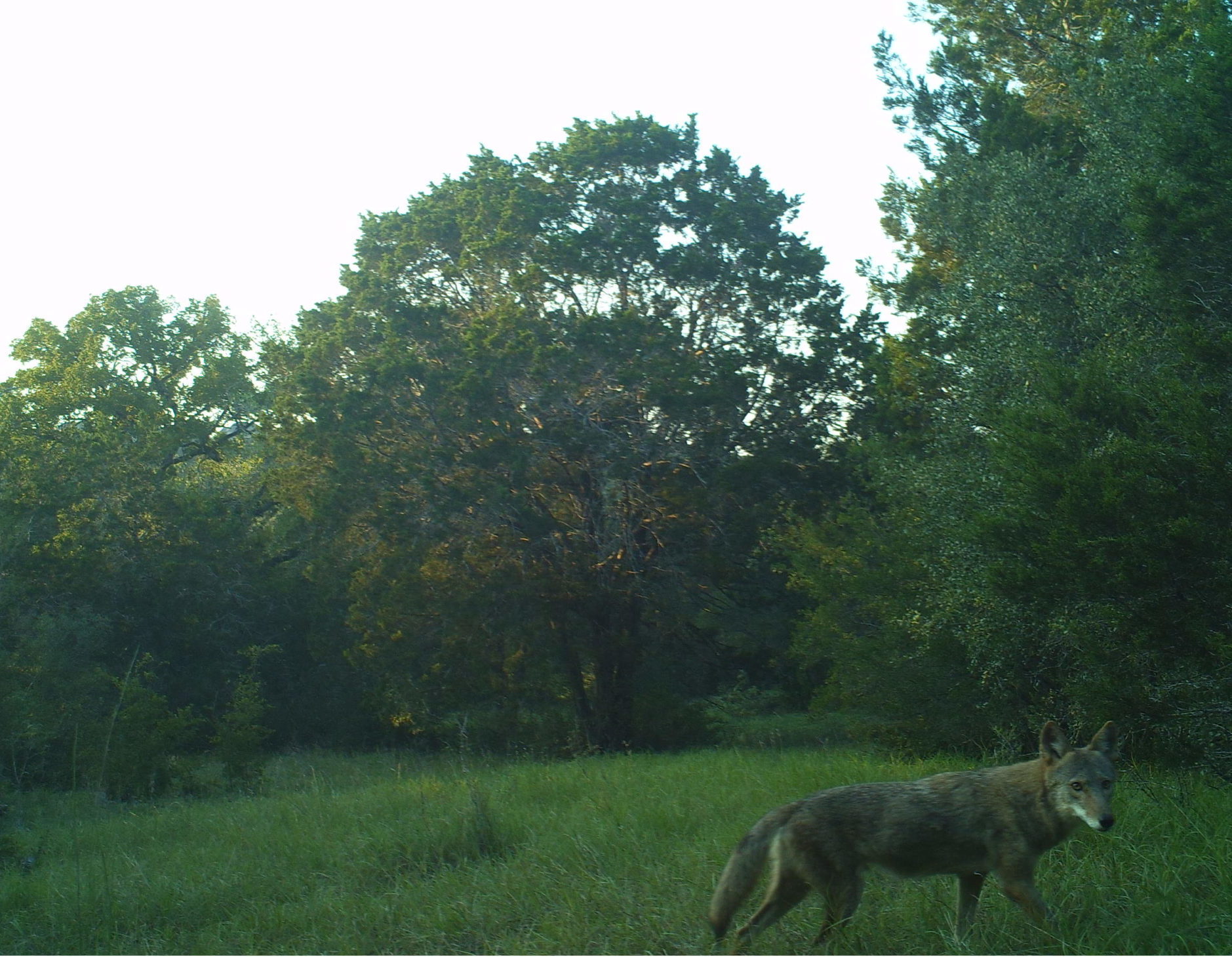 Predators Play an Important Role in Maintaining a Healthy Wildlife Habitat
Predators Play an Important Role in Maintaining a Healthy Wildlife Habitat
Within healthy habitats, native predators provide an essential function to complex ecological systems. Removal of key predators can have unintended, negative consequences. Predators play a contributory role in balancing prey density, which can contribute to improved species diversity and reduced habitat pressure.
A familiar example is witnessed within the Texas Hill Country. As wolves and screw worms (among others) were eradicated in the second half of the 20th century, white-tailed deer populations began to sky-rocket to the point of becoming grossly over-abundant. This artificially high density has resulted in landscape-scale habitat degradation from excessive use of preferred food resources (including trees, shrubs, vines, and forbs) by deer.
Predator Populations Can Also Become Out of Balance
Artificially high or even moderate densities of opportunistic predators can place significant pressures on naturally low-density or recovering wildlife populations. Where the underlying goal of a land manager is to increase or stabilize target wildlife populations, predator management can serve as an important activity contributing to the measurable success of a Wildlife Management plan. Our other management actions are sometimes the cause of this imbalance, such as feeding high volumes of corn that attract and support abundant raccoon and feral hog populations.
How does predator control fit in my Wildlife Management plan?
Within any wildlife management plan, predator control should be justified as a complementary practice to help mitigate detrimental effects that could compromise broader wildlife and habitat management goals.
Predators come in many forms, but the most commonly managed species on private lands in Texas include:
Native Predators: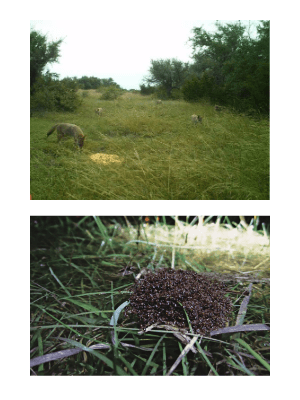
- coyotes
- bobcats
- raccoons
- skunks
- cowbirds
- rat snakes
Non-Native Predators:
- feral hogs
- imported red fire ants
- starlings
- house sparrows
Concerning non-native predators, presence/infestation alone justifies control efforts. Non-native species prey both directly and indirectly on native wildlife resulting in an unnatural pressure to which native wildlife have not had an opportunity to adapt. Native predators present a more complex need for justification.
Top 3 Questions for Landowners Considering Predator Control
Land managers need to answer three important questions to justify reducing predator densities as part of a wildlife management plan:
- Do the predators I intend to control directly or indirectly prey on my target species?
- Do predators occur in a density that can result in a measurable negative impact on my target species? (This impact can be cumulative with environmental factors such as drought and other disturbances.) As an example: if I have a deer overpopulation problem, coyote predation on deer fawns may help me achieve my management goals.
- Am I willing to engage in control of sufficient intensity and duration to make a real impact? Native predator control can require years of sustained, intensive effort to have a measurable impact and populations often bounce back quickly once control stops.
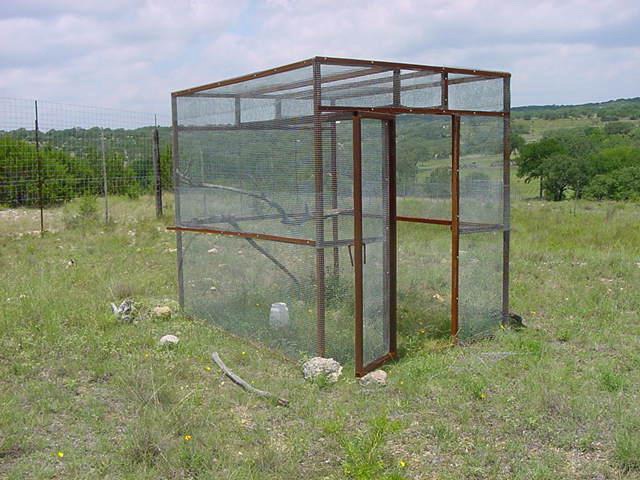 What qualifies as predator control?
What qualifies as predator control?
Proper trapping, active hunting, and harvest-on-site efforts are appropriate activities associated with controlling most predators. Another predator management technique involves monitoring and treating imported red fire ant (IRFA) infestation. Although IRFA and cowbird control are the only predator management activities with specific minimum intensities to qualify, a good faith effort should be made and documented when performing any predator control activity.
What DOES NOT qualify as predator control?
- Controlling small varmints when the defined target species is deer
- Controlling raccoons because they consume deer feed
- Killing non-predatory animals like porcupines
- Undocumented trapping efforts
- Undocumented hunting efforts
What is Plateau’s predator control solution?
Imported Red Fire Ant Treatment (IRFA): Armed with the right equipment and knowledge, our field technicians have the tools to fight back against this invasive pest. We spot treat whenever possible to reduce the amount of bait and limit impacts to native ants. Unlike treating fire ants on your own or hiring just anyone to throw bait on your fire ant mounds, Plateau will track and log where we treat the fire ants on your property, making this a favorite compliance activity for landowners in wildlife management valuation. Plateau recommends treating in late spring / early summer and again in the fall, so now is a great time for you to schedule a fall treatment.
Remote Camera Surveys: Monitoring predator populations is just as important as controlling them. Inferences can be made as to the relative abundance of predators on your property, but camera survey data is a more useful tool in determining when trapping/hunting efforts should be intensified or relaxed. They can also justify controlling a species that is otherwise an important member of a natural ecosystem. With this service, a Plateau professional will establish two or more baited infrared game camera stations for 10-14 days, and provide a detailed analysis of the captured pictures.
If you’re interested in learning more about how Predator Control can benefit your land and Wildlife Management goals or would like to schedule an IRFA treatment or Camera Survey, contact us at [email protected] or (512) 894-3479.
Back to TopBack to Top
Red Harvester Ants and The Horny Toad
Edited by Shane Kiefer, Director of Ecological Services, Certified Wildlife Biologist and Registered Property Tax Consultant
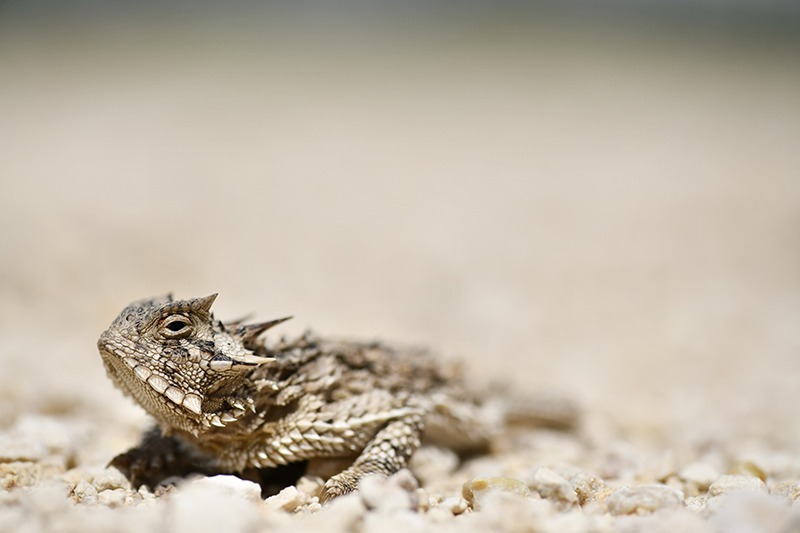 Unless you have been hiding under a rock, you have likely noticed the state reptile of the Lone Star state, the Texas horned lizard, Phrynosoma cornutum has declined dramatically from its historical range in the last few decades. The lizards were once established in about 95% of Texas counties – of which the eastern half of the range has mostly disappeared, and the numbers are still declining. As one of the state’s mascots, epitomizing the “Texan” in reptile form, most natives would agree the lizards are part of Texas’ heritage.
Unless you have been hiding under a rock, you have likely noticed the state reptile of the Lone Star state, the Texas horned lizard, Phrynosoma cornutum has declined dramatically from its historical range in the last few decades. The lizards were once established in about 95% of Texas counties – of which the eastern half of the range has mostly disappeared, and the numbers are still declining. As one of the state’s mascots, epitomizing the “Texan” in reptile form, most natives would agree the lizards are part of Texas’ heritage.
Although in large part due to habitat loss, reduction in the population of the red harvester ant, Pogonomyrmex barbatus has also contributed to the decline of the lizards. Red harvester ants make up 65% of the lizards’ diet and are also at risk of habitat loss. Red harvesters are relatively large, mound-building ants with a square head that forages for grass seeds during the day. The average colony size is around 10,000 with only one queen that can live up to 20 years. Unlike other ants, once the queen dies, the mound dies. During her long life, she produces 10,000 workers a year to collect seeds and feed the colony – all of which only live one year. Most of the ants are sterile female workers, but there are also reproducing females, or alates that mate and then leave to form new colonies. Less than 1% of mated females survive due to predation while searching for new areas to start a mound. Although the workers travel up to 130 feet from the mound to forage for grass seeds, many new areas are not suitable because of a lack of food supply. A colony that persists for two years has a 95% chance of survival. Therein lies the role of the land steward.
Along with habitat loss, harvesters are also predated upon by other herpetofauna, exposed to pesticides, and competitively excluded by invasive red fire ants. Studies show natural predators including doves, mockingbirds, and cardinals as well as robber flies, wasps, assassin bugs and dragonflies, are not causing a significant decline in the ant populations.
Invasive red fire ants do not directly kill harvesters but instead forage in the same areas “competitively excluding” them by starving them to death. Another man-made issue negatively influencing the ants is non-target ant treatments or broadcast treatments. These are often the easier and more efficient method to treat large areas but at the cost of treating anything that will take the bait. As the nature of the beast(s), invasive species oftentimes invade areas with little to no natural predators and utilize the resources available or reproduce faster than similar native species.
As stewards of the land, it is our responsibility to not only manage against invasive species but to provide for the native ones. The most influential means to provide for native species is to enhance native habitats and maintain them. Instead of managing for a species, manage the habitat to benefit multiple species and likely increase biodiversity in an area.
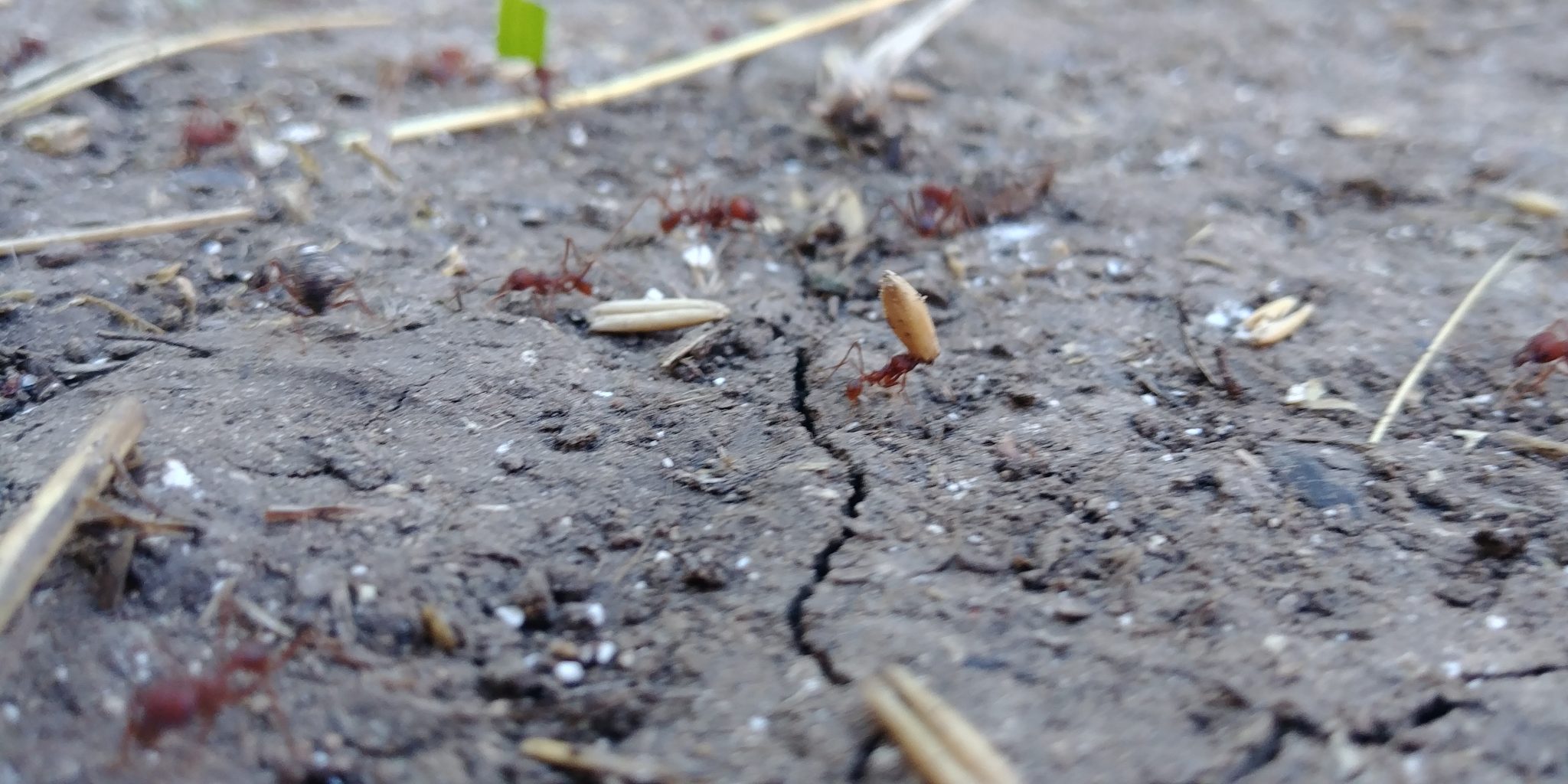
Photo of red harvester ants.
In open, relatively flat grasslands and prairies where both harvester ants and Texas horned lizards thrive, fires historically kept woody plants from encroaching on the area. Removing some of these encroaching species, while simultaneously reseeding within the optimal foraging area, can aid in restoring these areas to native grasslands. Another management technique recommended is spot treating fire ants with a bait designated for the species that allows fewer non-targets to be impacted and ensures each fire ant mound is discovered and treated. This is also a more cost-effective treatment as far as the cost of bait since none is wasted. Fire ants are often found within the same area as the harvesters, making selective treatments difficult.
It is extremely difficult to translocate a harvester ant mound without a tree spade but there are ways to treat the fire ants selectively. In an attempt to reduce the number of non-target species harmed, treat the fire ants later in the evening since harvesters do not forage at night like fire ants. For an organic option, spinosad baits (Conserve) work well applied to mounds or in a bait station with holes drilled at 1/16th of an inch to allow fire ants in but no other species (there are designs for bait stations with old coffee cans).
More warm days are just ahead of us and fire ants will continue to be active during this time. Like most invasive species, we will not likely ever eradicate the fire ants completely but it is crucial to treat throughout the year in order to knock the populations back. Since many ground-nesting species begin to mate in the spring, (lizards in late April and lay eggs a couple of weeks later, quail lay eggs around April to June, Killdeer early March, Texas Tortoise June to September, freshwater turtles emerge in warm spring), it is especially important to treat in the spring and early summer. Fall treatments are important to reduce the number of mounds that appear the following spring. Plateau uses Extinguish Plus as a treatment, which is a bait similar to Amdro, but offers longer-term control. These baits are safe to use on rangeland, though there are some restrictions so be sure to read the product label. Other baits are available and a good resource for information on them can be found at fireant.tamu.edu.
Back to TopBack to Top
Landowners Should Claim Their Rights Under Texas Laws that Limit Liability
Originally written by David Braun, Braun & Gresham, Principal, Attorney and Counselor. Updated by Margaret Menicucci, Braun & Gresham, Attorney and Counselor.
Texas has several strong laws protecting landowners from law suits arising out of accidents on their land, but the protection is only valid if a landowner takes active steps to qualify for the limits on liability. Given how many modern landowners invite guests to enjoy all kinds of potentially dangerous activities on their land, this is an increasingly important protection that every landowner needs make sure they understand and claim.
When Recreational Guests Have Accidents
 Texas law can protect landowners from law suits by guests who are injured while participating in any of the following recreational activities: hunting; fishing; swimming; boating; camping; picnicking; hiking; pleasure driving; nature study, including bird-watching; cave exploration; water skiing and other water sports; or any other activity associated with enjoying nature or the outdoors. All of these innocent sounding, fun activities for family and friends have at one time or another unfortunately resulted in death or serious injury. Sadly, such tragedies can be doubled if lawsuits end up financially ruining the landowner or causing him or her to lose their land because they didn’t take steps to qualify for legal protection.
Texas law can protect landowners from law suits by guests who are injured while participating in any of the following recreational activities: hunting; fishing; swimming; boating; camping; picnicking; hiking; pleasure driving; nature study, including bird-watching; cave exploration; water skiing and other water sports; or any other activity associated with enjoying nature or the outdoors. All of these innocent sounding, fun activities for family and friends have at one time or another unfortunately resulted in death or serious injury. Sadly, such tragedies can be doubled if lawsuits end up financially ruining the landowner or causing him or her to lose their land because they didn’t take steps to qualify for legal protection.
The rules for qualifying for protection under the Texas statute are different for agricultural and non-agricultural land. Land that is suitable for agriculture is eligible for heightened legal protections. Agricultural landowners have the law’s full protection from invited and “social” guests, as well as anyone given permission to use the land, such as hunters. Qualifying as “agricultural” land is defined by whether the land is “suitable” for agriculture, so our first job as advisors is to help a landowner document the land’s suitability for agriculture, or take additional steps if it is not.
A second important factor is whether the landowner charges for entry to the premises and if they do, how much do they charge and in what circumstances do they charge. The law’s protections only apply if a landowner collects less for entry than twenty (20) times the property taxes that they paid in the previous calendar year. For agricultural landowners, charging higher fees for some guests does not void the protection from invited social guests who are not charged. When Braun & Gresham attorneys review liability protection or write leases for hunting or grazing, we analyze all the taxes being paid, all the fees being charged and how they affect qualification for the protections of this law.
Finally, an owner of land suitable for agriculture can overcome these limitations on fees by having liability insurance that meets the mandatory minimum requirements. If the insurance covers $1,000,000 of liability for each instance of death, injury or property damage, then the landowner cannot be liable for more, unless there was a deliberate act by the landowner. The landowner’s liability is further limited to $500,000 for each person who is injured or killed and $100,000 for each single occurrence of property damage. Our risk management services include a review of insurance coverage. We recommend having the proper liability insurance in the proper amounts, even if the landowner is qualified for the other protections of the law, because otherwise the law may not completely protect from liability for all accidents.
For example, in one case the Texas Supreme Court found the landowner liable for a tragic accident by declaring the landowner guilty of gross negligence. The statute does not protect landowners from gross negligence, but adequate liability insurance might. A young child and her parents were the landowners’ guests. The parents supervised their daughter while she swam in a flood-swollen river upstream from a low water crossing. The current swept the child into a hidden culvert where she drowned. The court reasoned that even though the landowners were not present, they had specific knowledge that the culverts were dangerous and should have warned the guests.
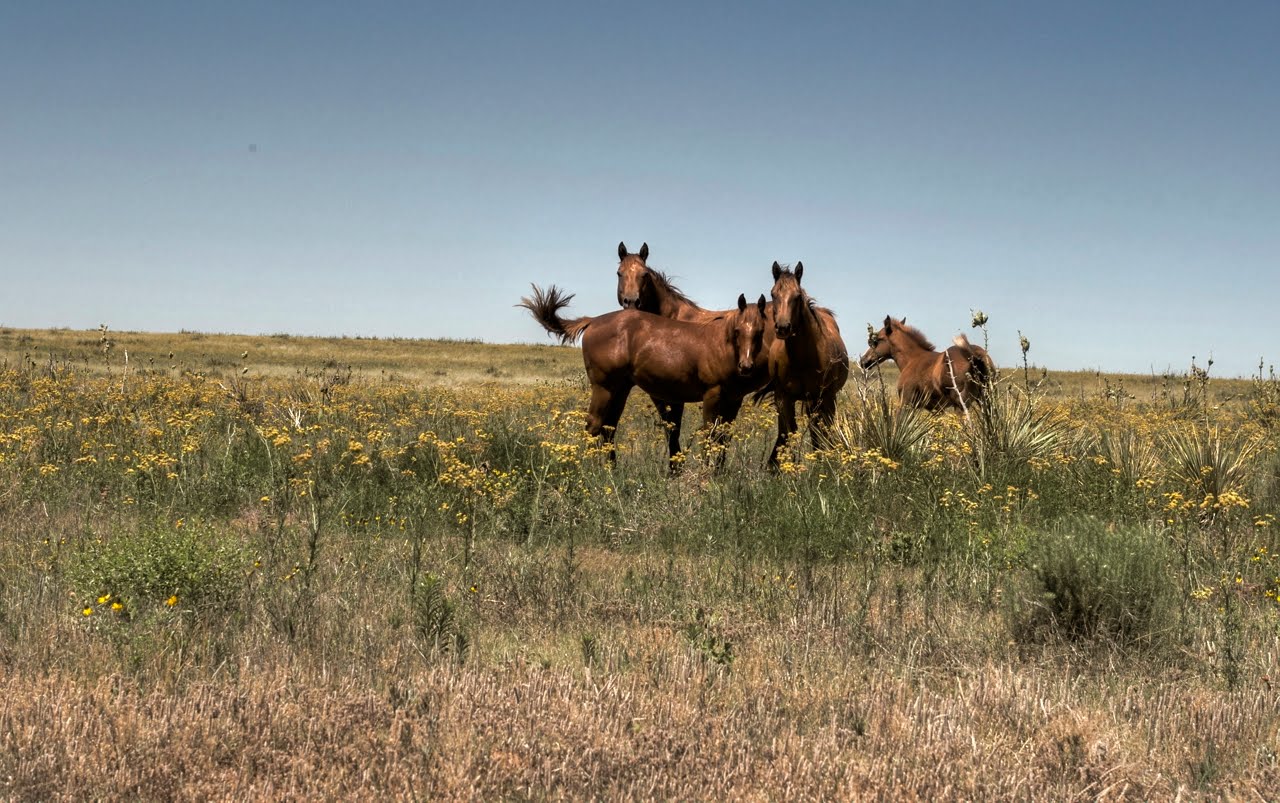 When Horses or Other Livestock Injure Guests
When Horses or Other Livestock Injure Guests
If you were reading carefully in the last section, you may have noticed that horseback riding was not included. Injuries caused by equine activities and other common livestock have their own law to deal with liability. The Texas law protects anyone against all liability for death, injury or property damage resulting from dangers or conditions that are an inherent risk of being around farm animals, but only if the owner of the animal takes some basic steps to qualify.
For the protections of this law to apply, a landowner must take care to never provide a guest with any faulty equipment (halters, bridles, saddles, etc.) when allowing the guest to participate in any activity that involves horses or other farm animals. We recommend a series of steps, including keeping a log of regularly scheduled equipment inspections to ensure it is in good condition.
Landowners must also make prudent efforts to determine the ability of a guest to participate safely in an activity involving farm animals. Another step we recommend is a questionnaire or checklist to quickly assess whether your guests are actually knowledgeable enough and physically fit enough to be allowed to participate. Many urban guests may have little or no experience being around horses, cows and other livestock. You may be surprised by what your guests don’t know.
Finally, the law requires a “farm animal professional” to display clearly readable signage with very specific language warning the guest of the limitations on liability should there be an accident. We believe it is prudent for non-professional animal owners to display the qualifying signage, so that guests are made aware of the potential dangers.
Taking the Right Steps to Build Liability Protection
Getting the most out of your rural land ownership can mean sharing it with a variety of guests, whether they are family and close friends or other people coming to the property to hunt, farm, or enjoy the open spaces. We help you understand and implement the actions available to reduce your risk of liability. These actions can include, among other things:
- Creating guest waivers;
- Reviewing hunting, grazing, and farming leases;
- Reviewing insurance coverage options;
- Reviewing and negotiating contracts with service providers;
- Developing a strategy for appropriate signage; and
- When appropriate, using a family business entity to hold the land.
Your land is unique and important to you. Braun & Gresham helps you protect it and your other assets, while you enjoy the many benefits of rural land ownership.
For questions or to speak with Braun & Gresham Attorney, Margaret Menicucci, about your liability concerns, please contact (512) 894-5426 or email [email protected]
Back to TopBack to Top
Plateau Land Group Featured Listing
Peaceful Rural Oasis
50 Acres, $330,000
Caldwell, Burleson County, TX
This attractive rural land includes improved and native pastures, a well-stocked pond, fertile soil and old-growth native hardwoods. Currently used for cattle grazing, the rolling pastures and woods include beautiful homesites and nature trails. Conveniently located near local amenities in Caldwell, Rockdale and Lexington, this property is a quiet escape to country living via a picturesque country drive.
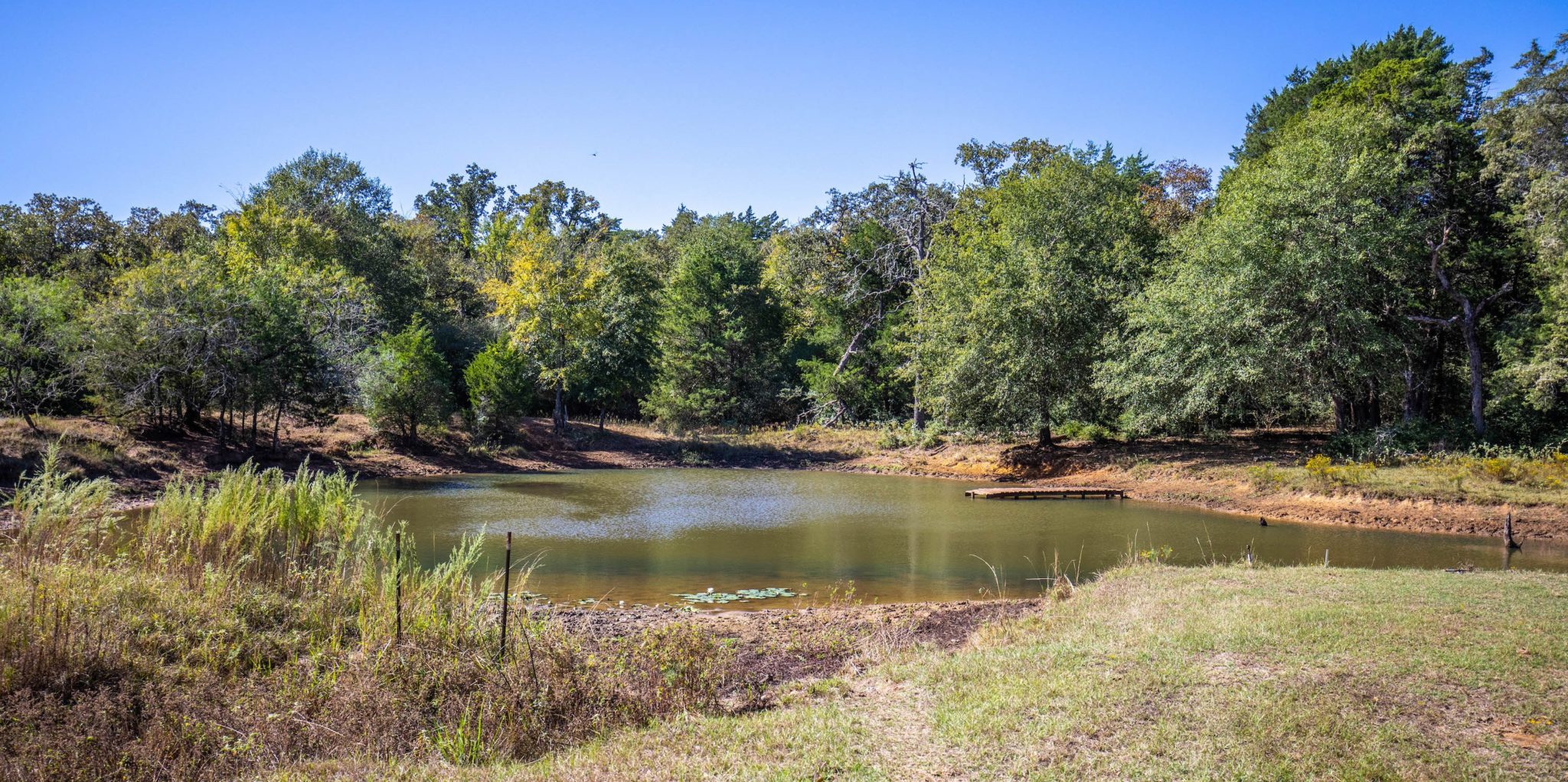
View all of Plateau Land Group’s listings.
Click here to receive Plateau Land Group’s newest listings by email.
News for Texas Landowners
Texas A&M AgriLife Maps Out Texas’ Working Lands
Article by Paul Schattenberg with Texas A&M AgriLife
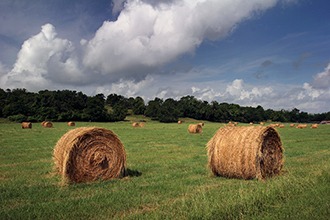
A new set of visual representations by the Texas A&M Natural Resources Institute, NRI, shows the breadth and diversity of the state’s working lands for agricultural production as well as the statewide support provided by Texas A&M AgriLife.
“The Texas A&M AgriLife Support Network is a descriptor of a collective effort that brings advancements to Texas agriculture and all Texans,” said Jim Cathey, Ph.D., associate director of the NRI. “Through maps and supporting text, the network shows the diversity of the state’s environmental conditions and agricultural systems, as well as the statewide support provided by Texas A&M AgriLife.”
“The 13 Texas A&M AgriLife Research and Extension Centers located throughout the state, combined with our statewide network of county agents and specialists, create an incredibly strong and effective support system…”
Senate Approves Great American Outdoors Act
Article by
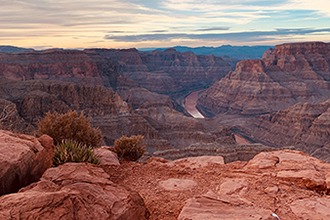
The U.S. Senate today 73-25 to approve the Great American Outdoors Act, which would fully fund the Land and Water Conservation Fund and make critical investments in our national park system.
“Today the Senate delivered a historic win for the conservation of America’s natural landscapes,” said Jennifer Morris, chief executive officer at The Nature Conservancy. “This bill would make major investments in the landscapes and landmarks vital to our economic, emotional and societal well-being. By protecting important natural spaces and investing in their care, this bill will help create jobs, rebuild local economies and expand access to the outdoors that everyone has a right to enjoy.”
The bill combines two conservation proposals that each have strong, bipartisan support. The first would provide full and permanent funding of $900 million each year for LWCF…
Bill Neiman: A Sculptor of Seeds and Soil
Article by Daniel Oppenheimer for Rock & Vine Magazine
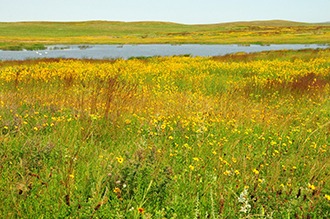
A sculptor molds, carves, shapes, and ultimately creates. They may work in different media and are adept with their tools. In addition to shapes, lines, and colors, some incorporate motion —an interrelationship of objects.
Bill Neiman is a sculptor. For more than four decades, his medium has been plants and Texas soil. In 1974, at age 19, he started his own landscaping company with a borrowed shovel, rake, and lawn mower.
Today, Neiman’s family and a dedicated team run Native American Seed, located along the Llano River near Junction. The family farm produces native wildflowers and grasses for land stewards across the state.
As with any artist, Neiman went through a few creative phases. “As a landscaper working outside the Dallas Metroplex in the 1970s, my job was to clean up behind the bulldozers and make things look nice…”
AgriLife Extension Launches Online Course in Aquatic Vegetation Management
Article by
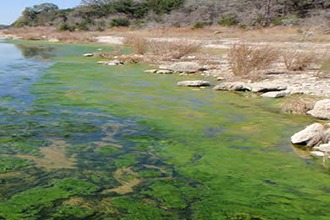
Texas A&M AgriLife Extension Service has developed an online course series for individuals needing assistance with identification and management of aquatic plants.
Landowners, farmers and ranchers with ponds or ‘tanks’ on their land can expect this online course series to provide them with simple, yet practical management solutions, said Brittany Chesser, AgriLife Extension program specialist-aquatic vegetation management in the Department of Rangeland, Wildlife and Fisheries Management.
“These four courses are designed for landowners and pesticide applicators who are looking for guidance in aquatic vegetation management,” Chesser said. “It also gives them the opportunity to earn continuing education credits in integrated pest management…”
2020 Rural Land Value Trends Report
Blog by
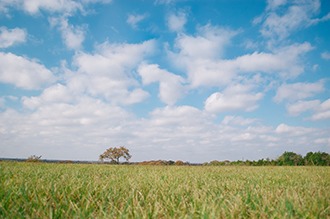
Each year, the Texas Chapter of the American Society of Farm Managers & Rural Appraisers publishes the Texas Rural Land Value Trends report. This document provides helpful, interesting information for Texas landowners on both average property value and lease rates for agricultural land across the state. They recently released their 2019 report.
The average price per acre in Texas increased by 6.4% from last year to $2,972/acre. The publication divides the state into 7 regions, and then further divides each region into sub regions. Land is divided into different categories applicable to the area, such as irrigated cropland, non-irrigated cropland, native pasture, and improved pasture. The report offers a range of leasing rates for each category in the sub region. Additionally, this is the only publication I am aware of that publishes average hunting rates in Texas…






Sorry, the comment form is closed at this time.